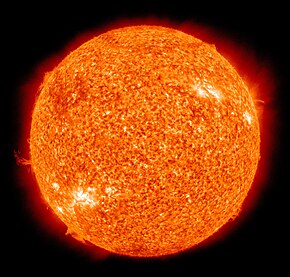The resultant value is known as the Kelvin-Helmholtz timescale, and reveals deep insights into the internal mechanism of the Sun.
Here's how to figure out the Kelvin-Helmholtz timescale. If we know the total gravitational energy of the sun, we can relate it to the luminosity of the sun multiplied by the Kelvin-Helmholtz timescale by using the Virial Theorem:
We know the luminosity of the Sun (about 3.8x10^26 W), so we just need to find the gravitational energy of the Sun. The total gravitational energy of the Sun can be given by the following expression:
The process used in constructing this integral involves taking an infinitesimally thin shell of the Sun and finding the gravitational energy due to the gravitational force between the shell and all the mass of the Sun interior to it (more discussion on these shells in my earlier post on Hydrostatic Equilibrium). In this expression, M(r) is the mass of the portion of the Sun inside each shell, and p(r) is the density of the Sun as a function of radial distance from the center. So, this integral sums up the pieces of gravitational potential energy between each shell and the mass of the Sun inside it, for all shells.
We have a problem, however. M(r) and p(r) are unknown. However, we can approximate the integral by using the average density of the Sun. The total gravitational energy, therefore, becomes:
Substituting in the values for the variables, we have:
So, the Kelvin-Helmholtz timescale is:
Thus, the Kelvin-Helmholtz timescale is on the order of magnitude of 10 million years. If the Sun were powered only by gravitational contraction, then it's lifespan would be about 10 million years. Is this true? Using radioactive isotope dating, we can measure the age of rocks on Earth to be about 4 billion years. Assuming the solar system was formed all at once, the Sun is much older than 10 million years. So, the Kelvin-Helmholtz timescale tells us that there must be something else powering the Sun's thermal output - that something turns out to be nuclear fusion.
 |
| The Sun. It's pretty hot. |





No comments:
Post a Comment